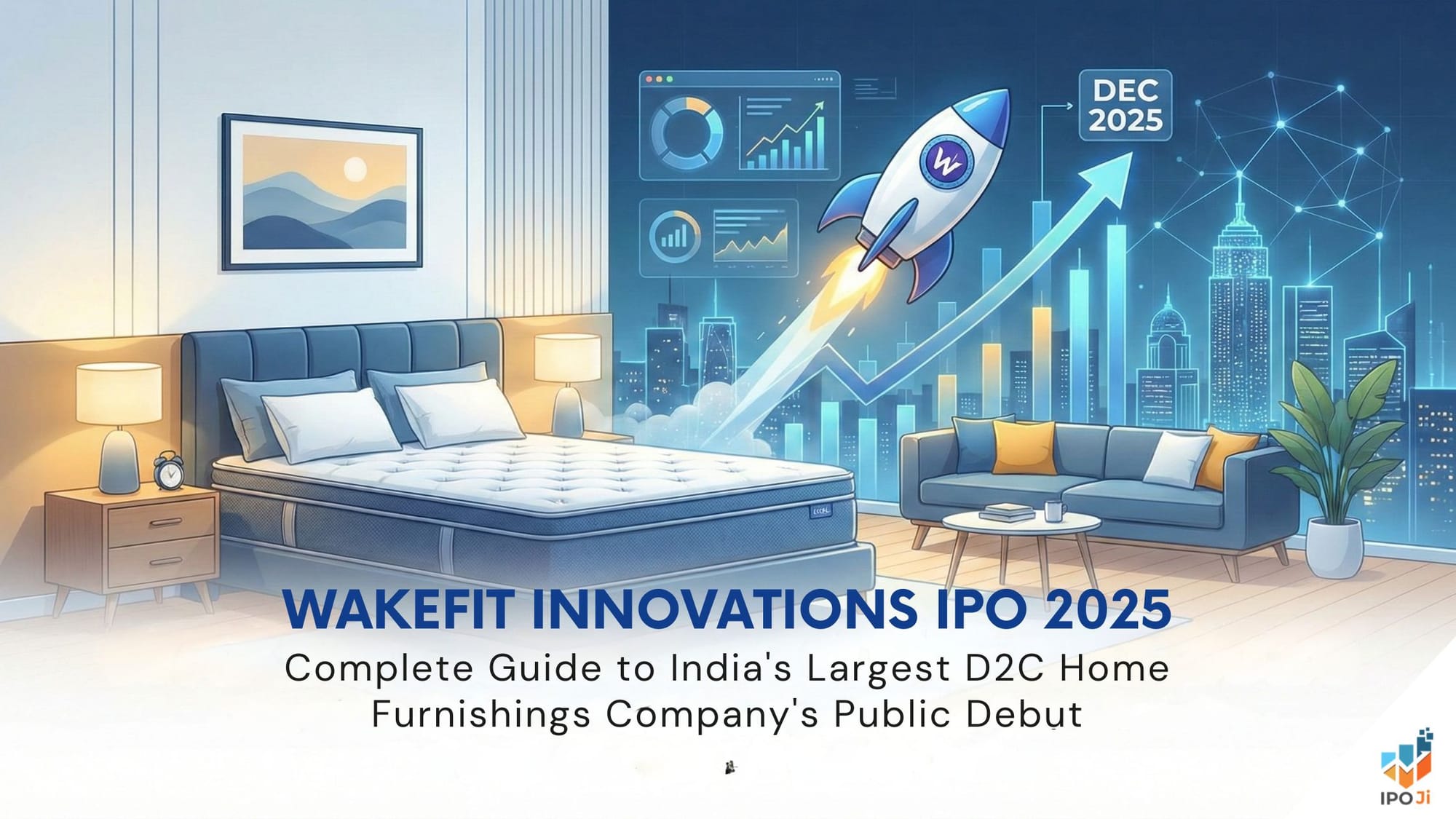HDB Financial IPO with Shareholder Quota
The HDB Financial Services IPO, backed by HDFC Bank, is set to launch a ₹12,500 crore public issue and include shareholder quota for HDFC Bank shareholders. Learn how to become eligible, apply correctly, increase your chances of allotment. Stay tuned as IPO Ji breaks down everything you need to know

There has been a lot of activity in India’s IPO sector this year and many people, including institutional and retail investors, are interested in the HDB Financial IPO. Thanks to support from HDFC Bank, HDB Financial Services will now be able to launch a big public issue after receiving SEBI’s go-ahead for ₹12,500 crore, which is regarded as the largest IPO in the NBFC market and one of the biggest since Hyundai listed in October 2024.
The IPO by HDB Financial includes a fresh issue of 2,500 hundred crore and an offer for sale (OFS) of 10,000 crore by HDFC Bank which already owns 94.6% of the company. The merger of HDFC Bank and HDFC Ltd happened after the previous HDFC listing in 2018 and this is the first time a company from the HDFC Group is going public since then.
📌 HDB Financial IPO Key Highlights
- IPO Opening Date: Wednesday, June 25, 2025
- IPO Closing Date: Friday, June 27, 2025
- Price Band Announcement: Friday, June 20, 2025
- Anchor Investor Bidding Date: Tuesday, June 24, 2025
- IPO Type: Fresh Issue + Offer for Sale (OFS)
- Fresh Issue Size: ₹2,500 crore
- Offer for Sale (OFS): ₹10,000 crore by HDFC Bank
- Total IPO Size: ₹12,500 crore
- Face Value: To be confirmed in the RHP
- Listing on: BSE and NSE
Let’s look at what HDB Financial is and what it offers.
Since its establishment in 2007, HDB Financial Services has been a non-deposit taking NBFC-Upper Layer which translates into stricter supervision by the RBI. Although the company belongs to the HDFC group, it works with its own board, management and system of governance.
The company is now one of the main players in India’s financial field, providing lending products, business process services and assistance to both individuals and businesses. The bank’s operations aim to include both city and countryside consumers, putting extra attention on middle-income groups and small businesses.
Business Model and the range of services
The company carries out its activities on three main fronts. The first one is Enterprise Lending which debuted in 2008 and lends money to micro, small and medium enterprises (MSMEs) as well as salaried persons. Such loans cover working capital, finance equipment and give credit for updating the business premises.
The second area of banking is Asset Finance, which EPOS launched in 2010. Under this segment, the company gives out loans for buying new and used commercial vehicles, tractors and other assets used in making a profit. With this model, contractors and transporters are not required to invest their working capital.
Another vertical called Consumer Finance is offered by HDB, providing loans for short periods to buy everyday items such as two-wheelers, smartphones, household appliances and everyday products. It provides specific loans and easy terms to people in cities, towns and their suburbs.
The company is experiencing continual and reliable growth in financial performance.
Over the years, HDB Financial has done well financially. Gross wholesale loans by the company reached ₹98,620 crore by September 30, 2024, showing an average growth rate of 21% per year since FY22. Queserve posted a net profit of ₹2,460.8 crore for FY24, which is more than the ₹1,620 crore it achieved in FY22.
The company had a 3.03% return on assets and a 19.55% return on equity which means it is operating efficiently. Also, the net interest margin for the bank is above 7% which is regarded as a strong indicator for NBFCs.
According to HDB’s report, gross NPA stood at 1.90% and net NPA at 0.63%, backed by a PCR of 61%. This demonstrates that the bank’s loans have a good risk management system in place.
The E-commerce Industry has a wide reach across India and sells to many customers.
HDB Financial has established strong connections all across the country. On September 2024, it works in 1,772 branches at 1,162 cities and towns, in 31 states and union territories. The company is one of the largest NBFCs, thanks to serving over 17.5 million active clients.
Interestingly, very few of its branches are in India’s most populated cities which demonstrates that HDB is mainly targeting rural and semi-urban regions. By reaching out to rural customers, it gains an advantage in helping people with few banking choices and increasing where it does business.
Purpose behind HDB Financial Services IPO
This ₹12,500 crore IPO has been set up to serve two purposes at once. The new release of ₹2,500 crore is intended to boost the company’s Tier-I capital. This makes it possible to grow the bank, increase lending activities and build up the bank’s assets. Additionally, a part of the money raised will be used for legal fees, filing paperwork and marketing for the IPO.
Out of the ₹10,000 crore Offer for Sale (OFS), HDFC Bank needs to sell a portion of its possession to keep its shareholding at the minimum threshold set by SEBI. After going public, the percentage of HDFC Bank owned by the company will probably be less than 75%, but it will continue to be the biggest shareholder.
Risks Involved
As with most big IPOs, there are certain risks when investing in HDB Financial. A key issue is how the state of the economy affects both people’s need for loans and how timely they pay them back. It has been reported in the DRHP that slower economic growth in India may lead to a reduction in the company’s business performance.
Another significant danger is the low quality of loans in the portfolio. Even though Stage 3 loans from HDB have decreased from 4.99% in March 2022 to 1.90% by September 2024, any major defaults or regulations about provisioning may affect the financial security of HDB.
Relationship with HDFC Bank plays a big role in the company’s success. Having the HDFC Bank name and logo allows the company to operate, so damage caused to the HDFC brand could negatively influence its reputation and how it does business.
Another danger to face is uncertainty about interest rates. A rise in interest rates could cut down the company’s NIM and make profits more difficult to achieve, because borrowing costs might go up more quickly than the loans the company offers.
Why is the HDB Financial IPO Special?
There are several things that make this IPO special. Not only is this NBFC the biggest IPO in India, it is also the first public offering by the HDFC Bank Group since 2018. In addition, this is the first IPO since the HDFC-HDFC Bank merger which makes it a noteworthy launch in the Indian financial sector.
Because of its strong brand, rural presence, variety of business activities and secure financial situation, HDB is a good choice for investors of all kinds.
In the End: Should Investing Be Something You Consider?
If you want to invest in an NBFC with good roots in rural areas, reliable and regular growth and the guarantee of a leading financial brand, you might consider the IPO of HDB Financial. Yet, investors are advised to assess possible economic risks, heavy dependence on the promoters and sensitivity of the loan book before making a decision.
Many retail investors will likely talk about this IPO in 2025 and you may want to consider it for your long-term investments.
📌 Shareholder Quota in HDB Financial IPO: Are You Eligible?
One of the most common questions retail investors are asking is whether the HDB Financial Services IPO offers a Shareholder Quota—and if yes, how to become eligible for it.
As HDB Financial is a subsidiary of HDFC Bank, there is a strong possibility that the IPO will include a reserved portion for eligible shareholders of HDFC Bank under the Shareholder Category, similar to past IPOs like HDFC AMC and HDFC Life. However, the final confirmation on this will only come in the RHP (Red Herring Prospectus) closer to the IPO launch date.
If introduced, the Shareholder Quota will reserve a small percentage of the issue for existing shareholders of HDFC Bank. To qualify for this quota, an investor must hold at least one share of HDFC Bank in their demat account on the record date, which will be announced prior to the IPO.
🔍 How to Apply Under the Shareholder Category
If the Shareholder Quota is applicable, here’s how you can apply:
- Own HDFC Bank Shares in your demat account at least one day before the record date (T+1 settlement rule applies).
- When applying for the IPO via UPI or ASBA, select the ‘Shareholder Category’ while filling out the application form.
- You may also apply in the Retail Category separately, but ensure the combined application amount does not exceed ₹2,00,000, or your bids may get rejected.
🔎 Monitor When New IPOs Are Coming
If you want IPO alerts in real time, allotment results, subscription status and GMP updates, get the IPO Ji app now. Monitor all SME and Mainboard IPOs from one place—this is simple, it happens fast, and it’s reliable.




